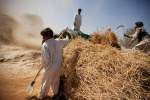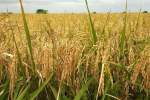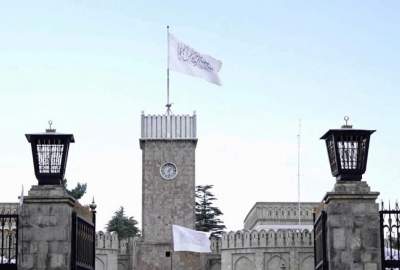Farmers in four districts of eastern Nangarhar province have produced some 94,000 metric tons of Gur or brown sugar from sugarcane yield this season, replacing Pakistani Gur.
Publish dateTuesday 25 December 2018 - 03:15
Story Code : 176562
AVA- The farmers say the gur they produced is sold like hot cakes locally but the government has not yet extended any support to them.
The gur manufactured in Kama district of Nangarhar is famous and a large number of youth daily visit manufacturing units, called locally as “Gani” in the district.
Farmers said previously they would sell their sugarcane produce in cities for making sugarcane juice, but now they have established their own gur-making units and are happy with the returns.
One of them, Wilayat Khan, a resident of Pirzo village in Kama district, said he planted sugarcane on his land this season and had already set up a Gani to make gur.
He said the gur making had not only increased their income from the sugarcane crop but also created jobs for many people.
Najibullah, a resident of Mastal village, said sugarcane crop was harvested after a long wait and the government should assist farming by offering them improvised seeds to improve their sugarcane production.
Nangarhar agriculture officials say 94 metric tons of sugar has been manufactured so far this season in four districts of the province.
Deputy agriculture director Abdul Waris Tand said that 1660 hectors of land was grown with sugarcane crop in Kama, Khewa, Batikot and Behsud districts this year.
He said so far 94.652 metric tons of gur had been produced so far and besides Nangarhar the gur was sold to buyers in Kunar, Laghman, Kabul and other provinces.
He said the locally produced gur had almost replaced the Pakistani gur because it was fondly bought at home.
A shopkeeper in Jalalabad, who was selling gur, said previously they sold Pakistani gur, but now every costumer used to ask about local gur.
He said the locally produced gur had a good taste and was pure and free from chemicals.
Agriculture experts say besides Nangarhar the environment in other eastern provinces suits sugarcane, which was abundantly produced in the region in the past.
Attiqullah Obaidyani, who agriculture faculty teacher at the Nangarhar University, said Nangarhar farmers were historically familiar with sugarcane production, but they needed government assistance in using good seed.
Meanwhile, Afghanistan Labor Union head Dr. Mohammad Liaqat Adil said workers at Ganis were subjected to heavy labor for long hours but paid low wages.
The gur manufactured in Kama district of Nangarhar is famous and a large number of youth daily visit manufacturing units, called locally as “Gani” in the district.
Farmers said previously they would sell their sugarcane produce in cities for making sugarcane juice, but now they have established their own gur-making units and are happy with the returns.
One of them, Wilayat Khan, a resident of Pirzo village in Kama district, said he planted sugarcane on his land this season and had already set up a Gani to make gur.
He said the gur making had not only increased their income from the sugarcane crop but also created jobs for many people.
Najibullah, a resident of Mastal village, said sugarcane crop was harvested after a long wait and the government should assist farming by offering them improvised seeds to improve their sugarcane production.
Nangarhar agriculture officials say 94 metric tons of sugar has been manufactured so far this season in four districts of the province.
Deputy agriculture director Abdul Waris Tand said that 1660 hectors of land was grown with sugarcane crop in Kama, Khewa, Batikot and Behsud districts this year.
He said so far 94.652 metric tons of gur had been produced so far and besides Nangarhar the gur was sold to buyers in Kunar, Laghman, Kabul and other provinces.
He said the locally produced gur had almost replaced the Pakistani gur because it was fondly bought at home.
A shopkeeper in Jalalabad, who was selling gur, said previously they sold Pakistani gur, but now every costumer used to ask about local gur.
He said the locally produced gur had a good taste and was pure and free from chemicals.
Agriculture experts say besides Nangarhar the environment in other eastern provinces suits sugarcane, which was abundantly produced in the region in the past.
Attiqullah Obaidyani, who agriculture faculty teacher at the Nangarhar University, said Nangarhar farmers were historically familiar with sugarcane production, but they needed government assistance in using good seed.
Meanwhile, Afghanistan Labor Union head Dr. Mohammad Liaqat Adil said workers at Ganis were subjected to heavy labor for long hours but paid low wages.
Source : خبرگزاری Afghn Voice Agency(AVA)
avapress.com/vdcg339qxak9un4.5jra.html
Tags
Top hits












